Hello, Frisco!
Ragtime Songs
Performed by Miss Ann Gibson with
Frederick Hodges, piano
Notes on the Songs by Frederick Hodges
“I Wants A Ping Pong Man” Lyrics
and Music by Howard Whitney
Copyright 1903 by M. Witmark
& Sons.
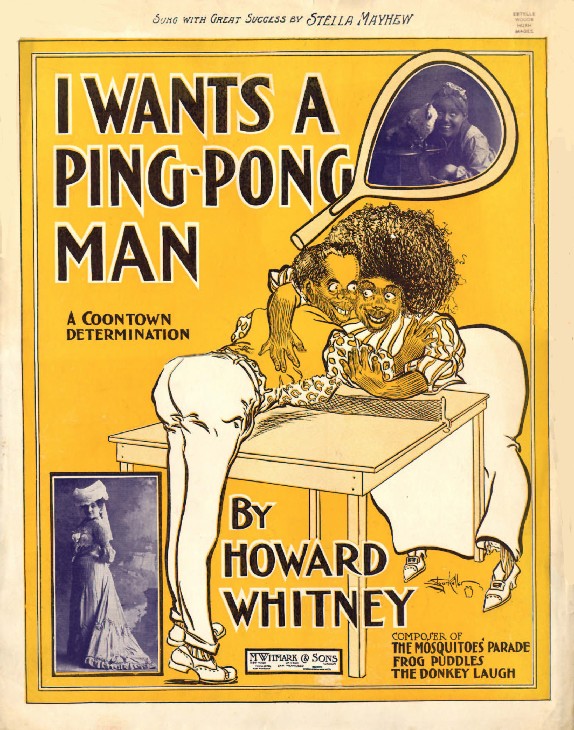
The world of coon songs is largely
misunderstood today, but it bears noting that many of the best coon songs
were written by Blacks for Black performers to sing in Black Vaudeville
houses. Great Black composers such as Paul Laurence Dunbar, James Reese
Europe, Rosamond Johnson, Will Marion Cook, and Ernest Hogan, to name but
a few, wrote coon songs. Scott Joplin himself penned coon songs, including
the original song version of “The Ragtime Dance.” Still, many of the infamous
and thunderous condemnations of ragtime as corrupt and immoral were really
condemnations of the salty lyrics found in coon songs. “I Wants A Ping
Pong Man” is among the mildest and most entertaining of coon songs, bristling
with topical humor and genuine ragtime rhythms. It celebrates the growing
popularity of ping pong, or table tennis. The game has its origins in England
as an after-dinner amusement for upper-class Victorians in the 1880s. Mimicking
the game of tennis in an indoor environment, everyday objects were originally
enlisted to act as the equipment. It was not until the early 1900s that
manufacturers standardized the ball and paddle and made them commercially
available. The game was relatively new to the United States in 1904, but
Whitney enjoyed spoofing it in his song by pretending that it had reached
the Black communities and was now used as a measure of a man’s fitness
as a suitor. Howard Whitney was a composer of little piano pieces and also
contributed songs to a couple of Broadway musicals in 1904, The Royal Chef
at the Lyric Theatre in New York and also to the flop Flo-Flo, starring
Stella Mayhew.
“The Dance Of The Grizzly Bear”
Lyrics by Irving Berlin and Music by George Botsford
Copyright 1910 by Ted Snyder
Co.
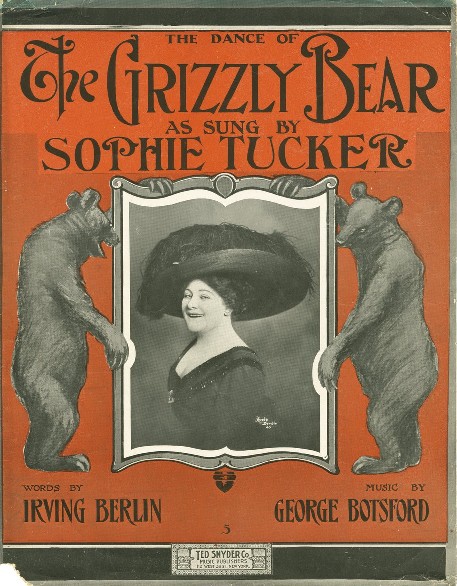
“The Dance Of The Grizzly Bear” started
its life as “The Grizzly Bear Rag” piano solo by noted ragtime composer
George Botsford, who was also a staff pianist at the publishing house of
Ted Snyder Company. Its immediate popularity prompted publisher Ted Snyder
to capitalize on the success of the piano rag by having his staff lyricist
Irving Berlin write words for it. While the piano rag was merely an instrumental
without any descriptive intent, Berlin’s coon song lyrics logically describe
the Grizzly Bear as one of the many animal dances that was sweeping the
nation at this time. The grizzly bear dance appears to have originated
in San Francisco, along with the Bunny Hug. In essence, it consisted of
imitations of the movements of a dancing bear. In the Ziegfeld Follies
of 1911, Fanny Brice danced the grizzly bear in a special production number
titled “The Barbary Coast.” The grizzly bear dance was frowned upon at
society dances due to its unsophisticated gestures and low associations.
On July 22, 1913, a dance card from the Exposition Park Dancing Pavilion
in Conneaut Lake, Pennsylvania warned patrons that the “Bear Dance” and
Turkey Trot would not be tolerated.
“Alexander’s Ragtime Band” Lyrics
and Music by Irving Berlin
Copyright 1911 by Ted Snyder
Co. Inc.
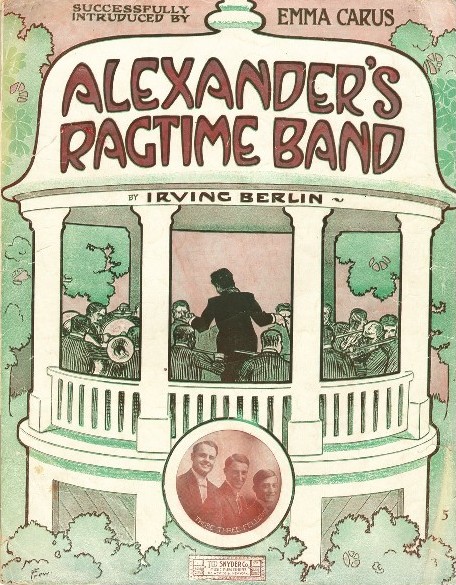
“Alexander’s Ragtime Band” was the
first big hit for Irving Berlin (1888-1989), earning him the title “The
Ragtime King.” The song became a national craze when the great Emma Carus
performed it in Chicago. The song then spread across the country and sold
over a million copies in just a matter of months. As wonderful as the song
is, there is considerable controversy about its origins. Scott Joplin was
convinced that Berlin stole the melody line of the verse from “A Real Slow
Drag,” a song from his opera Tremonisha, which he showed to Berlin at the
Crown-Seminary-Snyder offices, where Berlin was working in 1911. Berlin
kept the manuscript for quite a while before returning it to Joplin, declining
the opportunity to publish the opera. Joplin was shocked a few months later
when “Alexander’s Ragtime Band” came out, crying “That’s my tune!” Berlin,
of course, denied any wrongdoing. Joplin was then forced to make slight
revisions to “A Real Slow Drag” in order to avoid being charged with plagiarism
in turn. These revisions notwithstanding, the similarities between the
two songs remain striking. Whatever its origins, “Alexander’s Ragtime Band”
is terrific. Its enduring popularity was demonstrated in 1938 when Twentieth
Century-Fox produced a hit musical film of the same name, starring Alice
Faye and Tyrone Power. The film spun an elaborate and highly entertaining
fiction about the origin of the song. Much like MGM’s Easter Parade of
1948 and Twentieth Century Fox’s There’s No Business Like Show Business
(1954), Alexander’s Ragtime Band was largely a vehicle for Irving Berlin
to license his early catalogue of songs — at tremendous cost — to Hollywood.
“Everybody’s Doing It Now” Lyrics
and Music by Irving Berlin
Copyright 1911 by Ted Snyder
Co.
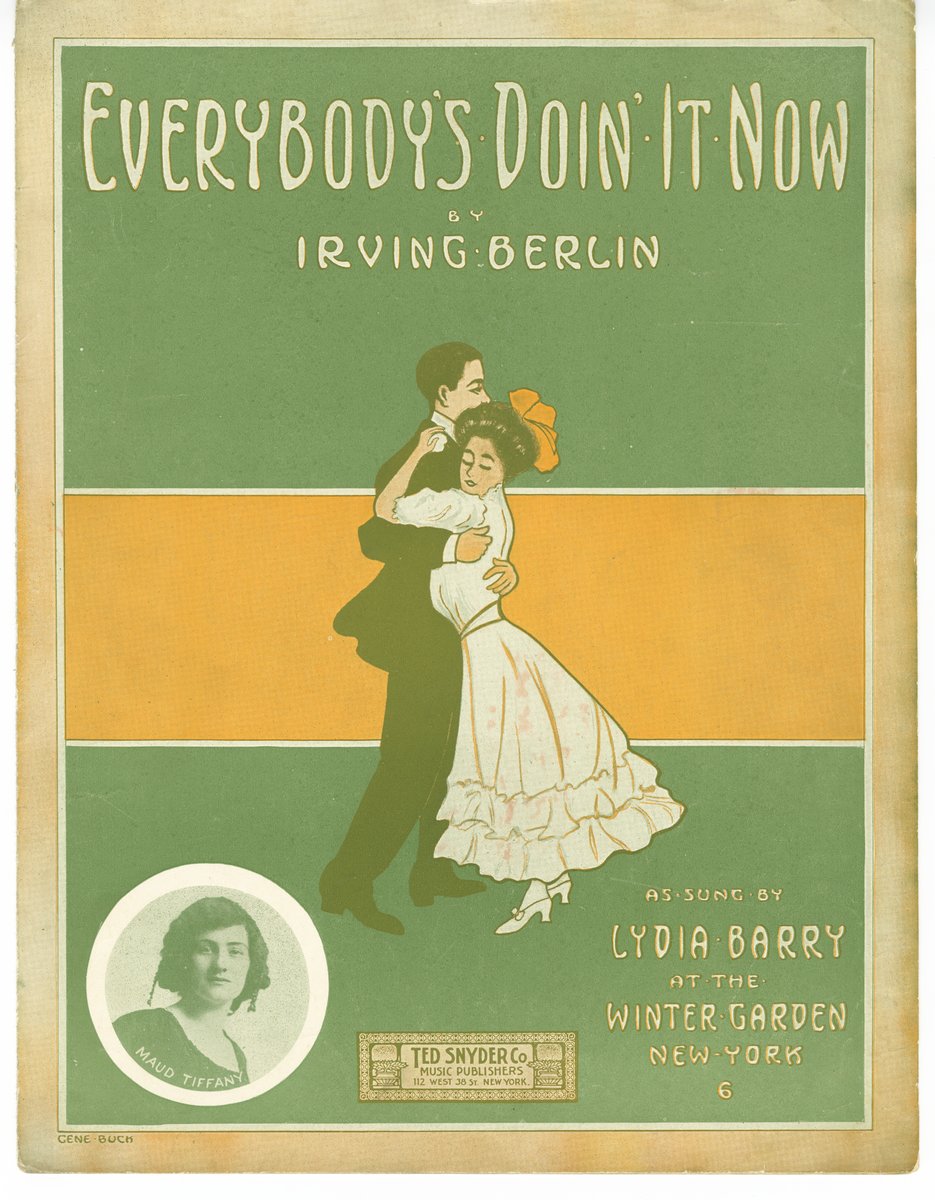
“Everybody’s Doing It Now” is another
of Irving Berlin’s early hit songs that quickly became a standard. Purportedly
about a couple who are eager to take a spin out on the dance floor to a
snappy ragtime tune, the song’s lyrics also cleverly contain an obvious
double entendre that has certainly contributed to its lasting popularity.
“The Oceana Roll” Lyrics by Roger
Lewis and Music by Lucien Denni
Copyright 1911 by Jerome H. Remick
& Co.
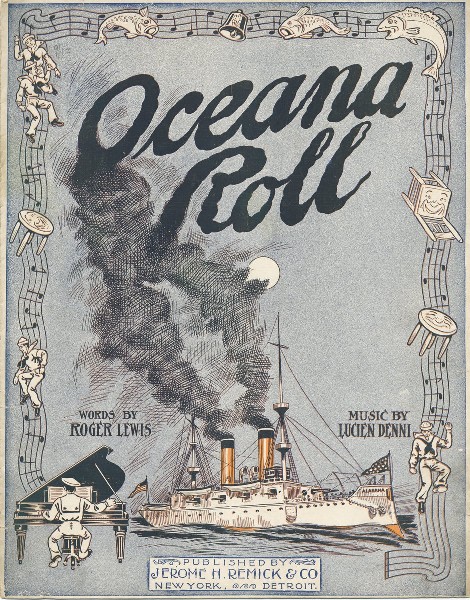
It is strangely fitting that “The
Oceana Roll,” one of the greatest ragtime songs, which tells the tale of
a shipboard pianist was written by a Frenchman. Lucien Denni (1886-1947)
was born in Nancy, France, but soon thereafter rolled his way across the
ocean toward the New World where he made his fame and fortune both as a
pianist in vaudeville and night club orchestras and as a composer. The
lyricist, Roger Lewis (1885-1948) was born in Colfax, Illinois.
“Ragtime Cowboy Joe” Lyrics by
Grant Clarke and Music by Lewis F. Muir and Maurice Abrahams
Copyright 1912 by F.A. Mills
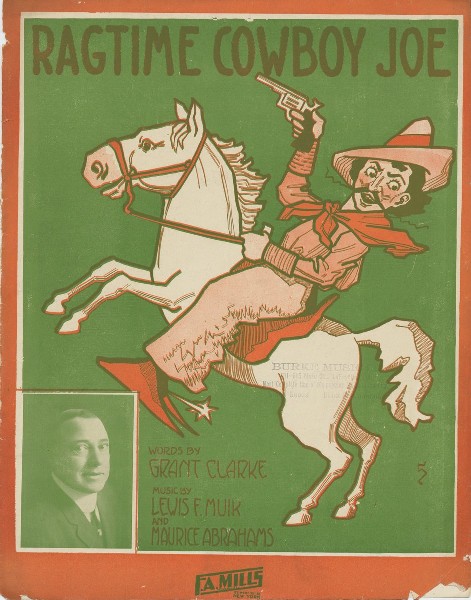
“Ragtime Cowboy Joe” was penned
by three of Tin Pan Alley’s top tunesmiths. Composer Lewis F. Muir (1884-1950)
was a ragtime pianist who performed at honky tonks in St. Louis on 1904
and in New York City in 1910. He was also an acclaimed performer in London.
Grant Clarke (1891-1931) began his working career as an actor in stock
companies, but soon found himself working as a staff writer at a variety
of music publishing firms. In addition to a steady outpouring of popular
songs, Clarke also wrote specialty material for Bert Williams, Fanny Crise,
Eva Tanguay, Nora Bayes, and Al Jolson. Maurice Abrahams (1883-1931) was
a charter member of ASCAP, who, in addition to writing songs, was a professional
manager of music publishing companies who eventually founded his own publishing
firm. “Ragtime Cowboy Joe” was a success when it first appeared in 1912,
but it too had a great future in store when Alice Faye sang the song in
the 20th Century Fox film Hello, Frisco, Hello in 1943. Betty Hutton also
gave the song her best shot in the 20th Century Fox film Incendiary Blonde,
a “bio-pic” about the life of boisterous entertainer Texas Guinan. “Ragtime
Cowboy Joe” is also the fight song for the University of Wyoming Cowboys.
“Row, Row, Row” Lyrics by William
Jerome and Music by Jimmie V. Monaco
Copyright 1912 by Harry Von Tilzer
Music Publishing Co.
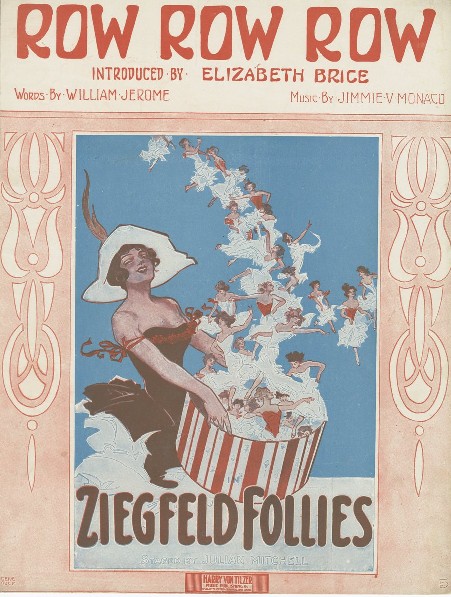
“Row, Row, Row” was the most popular
song featured in the 1912 edition of the Ziegfeld Follies and was introduced
by the charming Miss Elizabeth Brice. The song’s lyricist, William Jerome
(1865-1932), is best known for his enduring 1910 hit “Chinatown My Chinatown.”
James Vincent Monaco (1885-1945) was born in Fornia, Italy, but immigrated
to Albany, New York when he was six. He worked as a ragtime player in Chicago
before moving to New York. Monaco’s first successful song “Oh, You Circus
Day” was featured in the 1912 Broadway revue Hanky Panky. Perhaps his best
remembered song is “You Made Me Love You (I Didn’t Want to Do It)” introduced
by Al Jolson in 1913 and performed by Judy Garland with revised lyrics
as “Dear Mr Gable” in 1937. Monaco worked with a number of lyricists before
moving to Hollywood where he teamed with lyricist Johnny Burke to produce
songs for several Bing Crosby films.
“Snookey Ookums” Lyrics and Music
by Irving Berlin
Copyright 1913 by Waterson, Berlin
& Snyder Co.
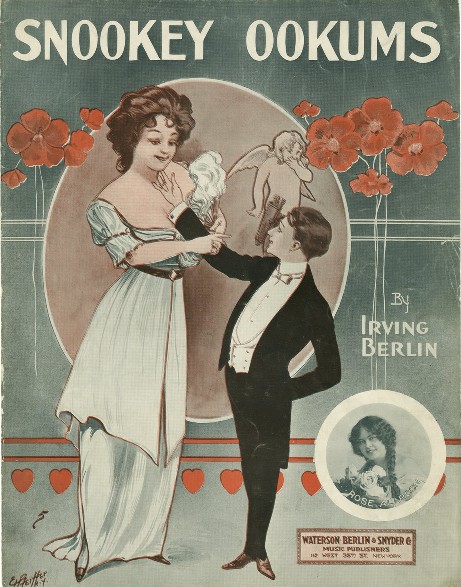
Irving Berlin made light of the
challenges of apartment living in his classic “Snookey Ookums,” which humorously
address the thin-walled construction typical of cheap New York apartment
houses of the early twentieth century. Although there were many recordings
made of this song, the best may well be the comic duet by Arthur Collins
and Byron G. Harlan, preserved on Edison Blue Amberol (1796). Irving Berlin
himself performed “Snookey Ookums” to great acclaim in the summer of 1913
in the British revue Hullo, Ragtime! on the stage of London’s Hippodrome
Theatre.
“That International Rag” Lyrics
and Music by Irving Berlin
Copyright 1913 by Waterson, Berlin
& Snyder Co.
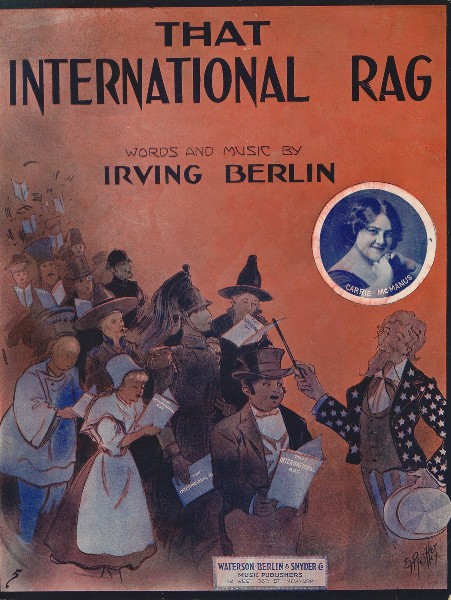
Again, we find Irving Berlin writing
a legendary hit song that would be revived many years after its initial
success. Billy Murray may have made the best recording of this song in
1913 (2078: Edison Blue Amberol), but Ethel Merman belted it out in the
20th Century Fox’s 1953 film version of Irving Berlin’s hit Broadway musical
Call Me Madam. Alice Faye sang it with captivating charm in Alexander’s
Ragtime Band.
“Aba Daba Honeymoon” Lyrics and
Music by Arthur Fields and Walter Donovan
Copyright 1914 by Leo Feist,
Inc.
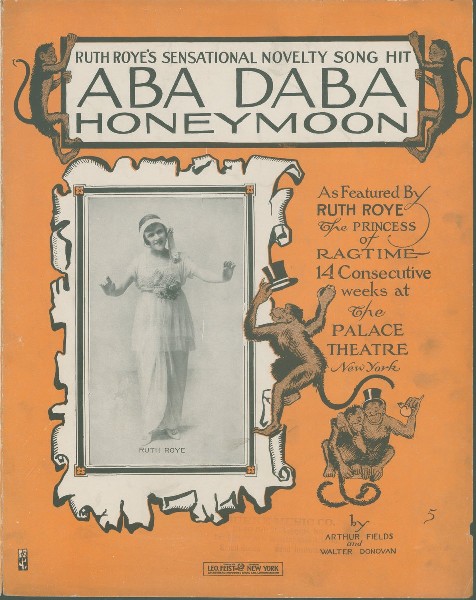
Known for its unswerving devotion
to exploiting fads, Tin Pan Alley’s craze for monkey songs reached a fevered
pitch in 1914 when vaudeville favorite Ruth Roye thrilled audiences at
New York’s Palace Theatre with what is arguably the best monkey song ever
written, “Aba Daba Honeymoon.” The lead author was Arthur Fields (1888-1953),
who was a favorite on the Vaudeville stage and a prolific recording star.
“Aba Daba Honeymoon” was revived in the 1950 MGM film Two Weeks With Love,
soon followed by the release of a popular Debbie Reynolds and Carleton
Carpenter MGM record (30282), earning Fields around $10,000 in royalty
fees in 1951. The song was first popularized on records made in late 1914
by Collins and Harlan (Victor 17620, Edison Diamond Disc 50192, Blue Amberol
2468).
“I Want To Go Back To Michigan”
Lyrics and Music by Irving Berlin
Copyright 1914 by Waterson, Berlin
& Snyder Co.
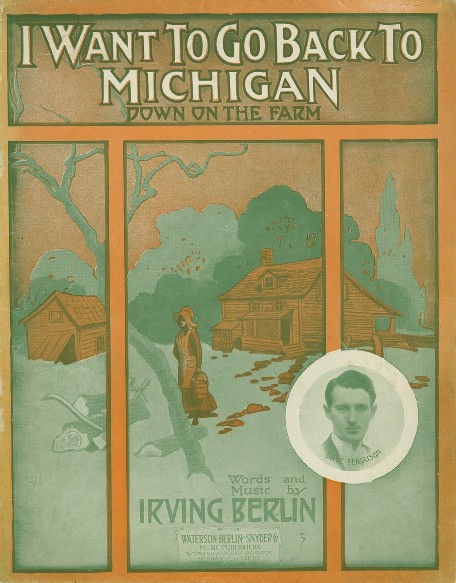
“I Want To Go Back To Michigan”
is a charming Irving Berlin song that perfectly illustrates one of the
predominant themes in Tin Pan Alley songwriting: “The Homesick Urbanized
Rube.” Starting in the nineteenth century, the steady exodus of job-seeking
young men from rural areas to urban centers, especially the big industrialized
East Coast cities, was a notable demographic phenomenon. Presumably, these
young men were unhappy with city life and longed for the bucolic life they
left behind. Tin Pan Alley responded to this sociological situation by
churning out thousands of songs that addressed it directly. Irving Berlin’s
1914 masterpiece was a hit in its day and was also charmingly reintroduced
to America by Judy Garland in MGM’s 1948 classic Easter Parade.
“Hello, Frisco!” Lyrics by Gene
Buck and Music by Louis A. Hirsch
Copyright 1915 by M. Witmark
& Sons
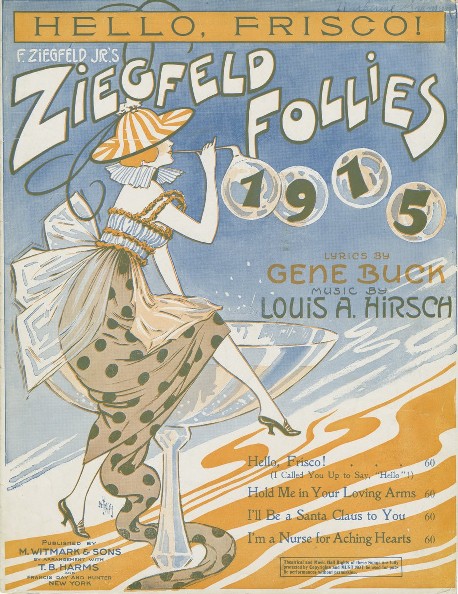
Celebrating the new transcontinental
telephone hookup, “Hello, Frisco!” proved that new technologies could be
a boon to romance. Situated at the New Amsterdam Theatre, the 1915 Ziegfeld
Follies featured sets by Joseph Urban. The opening sequence had showgirls
“swimming” in waves of blue light, and massive golden elephants spouting
real water through their upturned trunks. For the “Hello, Frisco!” number,
chorus girls appeared in costume as various cities now connected through
the miracle of modern technology. The song’s composer, Louis Achille Hirsch
(1881–1924) began his career as a staff composer for the Shuberts, but
by 1915 was enough of a success for Florenz Ziegfeld to invite him to contribute
a score for the Ziegfeld Follies. Lyricist Gene Buck was one of Ziegfeld’s
staff writers and also worked as a sheet music cover artist. “Hello, Frisco!”
instantly became the hit song of the 1915 Ziegfeld Follies. In 1943, the
song became a hit once again when it was featured by Alice Faye in the
lavish Twentieth Century-Fox Technicolor musical Hello, Frisco, Hello.
“If You Only Had My Disposition”
Lyrics by Charles McCarron and Music by Albert Von Tilzer
Copyright 1915 by Broadway Music
Corporation
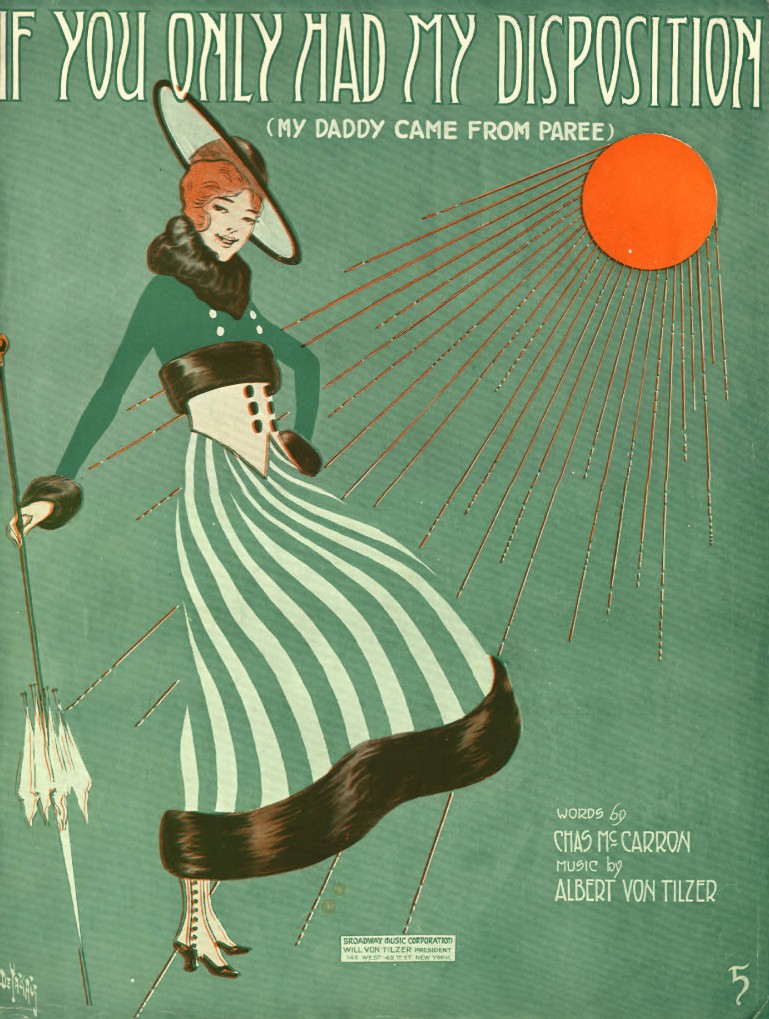
This wonderfully naughty song, “If
You Only Had My Disposition,” could well have been written with Vaudeville
star Eva Tanguay in mind because it perfectly captures her saucy stage
persona. One of the best early recordings of the song was a duet by Sam
Ash and Edith Chapman on Columbia (A1868). Albert and Harry Von Tilzer
(1878-1856) dominated Tin Pan Alley during the first two decades of the
twentieth century. In addition to countless other hits, Albert’s 1908 song
“Take Me Out To The Ball Game” captured the heart of the nation and established
him as a megastar in the popular music realm. Charles Russell McCarron
(1891-1919) was prolific composer, a cartoonist, a pianist, and a Vaudeville
singer. He spent most of his musical career gainfully employed as a staff
composer at Albert Von Tilzer’s Broadway Music Corporation. He is best
remembered today for the 1919 jazz standard “Blues My Naughty Sweetie Gives
To Me,” which hit the music racks after his untimely death on 27 January
1919.
“I Love A Piano” Lyrics and Music
by Irving Berlin
Copyright 1915 by Irving Berlin
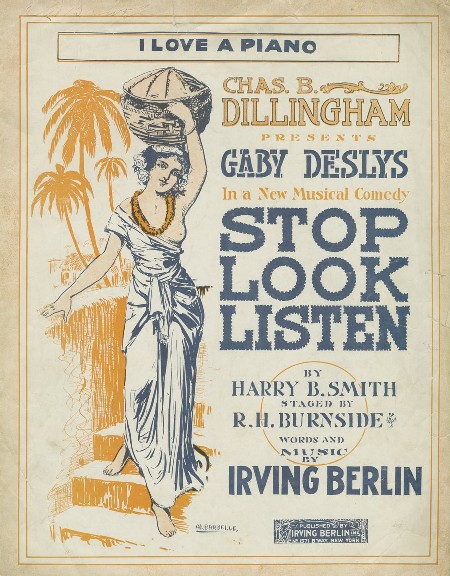
“I Love A Piano,” one of Irving
Berlin’s best songs, was first performed by Harry Fox and ensemble as the
finale to act one in Irving Berlin’s big stage production Stop! Look! Listen!,
which opened at the Globe Theatre in New York in late December 1915. Marion
Davies, the great film star of the 1920s and 1930s, made one of her earliest
stage appearances in the show. The song was charmingly revived by Fred
Astaire and Judy Garland in the spectacular 1948 MGM film Easter Parade.
“The Dixie Volunteers” Lyrics
and Music by Edgar Leslie and Harry Ruby
Copyright 1917 by Waterson, Berlin
& Snyder Co.
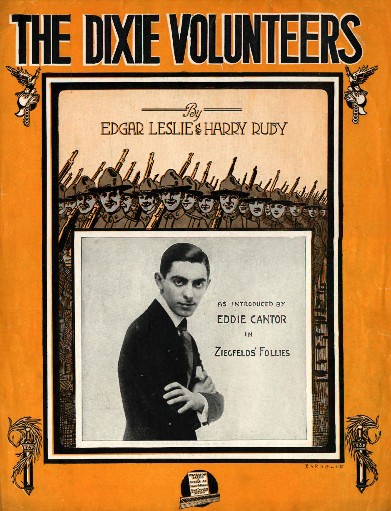
In 1917, as the United States appeared
headed to join the war, patriotic sentiments ran high. Eddie Cantor introduced
a snappy war song into the Ziegfeld Follies that became quite popular.
“The Dixie Volunteers” was written by the song writing team of Edgar Leslie
(1885-1976) and Harry Ruby (1895-1959). Tin Pan Alley responded to World
War I by pumping out thousands of songs that fell into just a few broad
categories. “The Dixie Volunteers” is a “volunteer” song, which invariably
revolved around the military contributions of southerners and Blacks. Other
notable songs of this genre are “The Mississippi Volunteers” (1917) by
Levinson and Cobb, and “The Ragtime Volunteers Are Off To War” (1917) by
MacDonald and Hanley. These songs are snappy songs that advocate the idea
that Black American soldiers sent to Europe would win the war by just being
themselves and singing their native Dixieland songs.
“When Alexander Takes His Ragtime
Band To France” Lyrics and Music by Alfred Bryan, Cliff Hess, and Edgar
Leslie
Copyright 1918 by Waterson, Berlin
& Snyder Co.
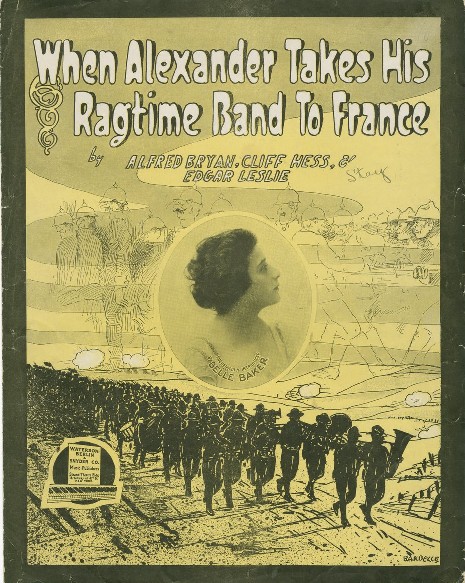
“When Alexander Takes His Ragtime
Band To France” is certainly one of the most enjoyable World War I songs,
most especially because it continues the saga of the mythical band leader
“Alexander” popularized by Irving Berlin in 1911. There were many songs
about Alexander, but this one is especially fun because of its suggestion
that the sound of American ragtime would make the German soldiers lay down
their guns and start dancing together on the battlefield “like picaninies.”
This is a play on the same theme espoused by Irving Berlin in “That International
Rag.” American song writers obviously were very impressed with their abilities
and were confident that they would transform the world through ragtime.
“Sahara (We’ll Soon Be Dry Like
You)” Lyrics by Alfred Byran and Music by Jean Schwartz
Copyright 1919 by Jerome H. Remick
& Co.
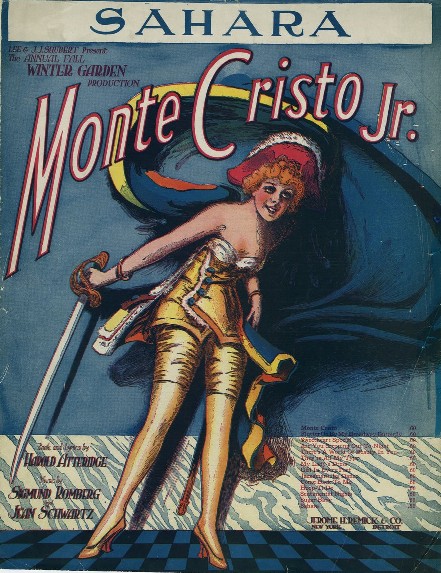
Monte Cristo Jr. was one of the
biggest and most succesful musical extravaganzas of the 1919 theatre season.
It opened 12 February 1919 at the Winter Garden Theatre and played for
254 performances. The score was nominally by Sigmund Romberg, but like
so many Broadway shows, it was spiced up with interpolated numbers that
injected a welcome bit of topical humor and levity. “Sahara (We’ll Soon
Be Dry Like You)” was as topical a song inspired by the impending passage
of the National Prohibition Act, “The Volstead Act.” This Act enabled Federal
enforcement of the 18th Amendment to the U.S. Constitution, ratified on
16 January 1919, which banned the “manufacture, sale, or transportation
of intoxicating liquors” in the United States. This Act, was vetoed by
President Woodrow Wilson and over ridden by Congress overroad the veto
on October 28, 1919. Composer Jean Schwartz (1878-1956) was born in Budapest
and immigrated to the United States at the age of ten. Among his many hits
were “Rock-A-Bye Your Baby With A Dixie Melody” (1918) and “Chinatown,
My Chinatown” (1910). “Sahara,” however, is a song of remarkable and rare
sophistication. The chorus is a perfect example of “through-composed” music.
Most popular songs follow a 32-bar, A-A-B-A formula, consisting of four
eight-bar phrases. The first, second, and fourth eight-bar phrases are
roughly identical, while the third eight-bar phrase, known as the “bridge,”
is unique. In a “through-composed work,” however, no musical phrase is
ever repeated. Many examples of this form can be found in Schubert’s “Lieder,”
where the words of a poem are set to music, each musical line being different,
yet “through composed” music is very rare in American popular songs. The
only other examples of through-composed popular songsthat springs to mind
are the 1917 hit “Smiles” (by J. Will Callahan and Lee S. Roberts) and
Irving Berlin’s delightful 1924 song “Lazy.” Most fans of the song were
probably never aware of its unusual musical form, which is a testament
to Jean Schwartz’s musical cleverness. “Sahara (We’ll Soon Be Dry Like
You)” enjoyed tremendous success and was recorded by Billy Murray in November
1919 on Edison Diamond Disc (50638).
About the Performers
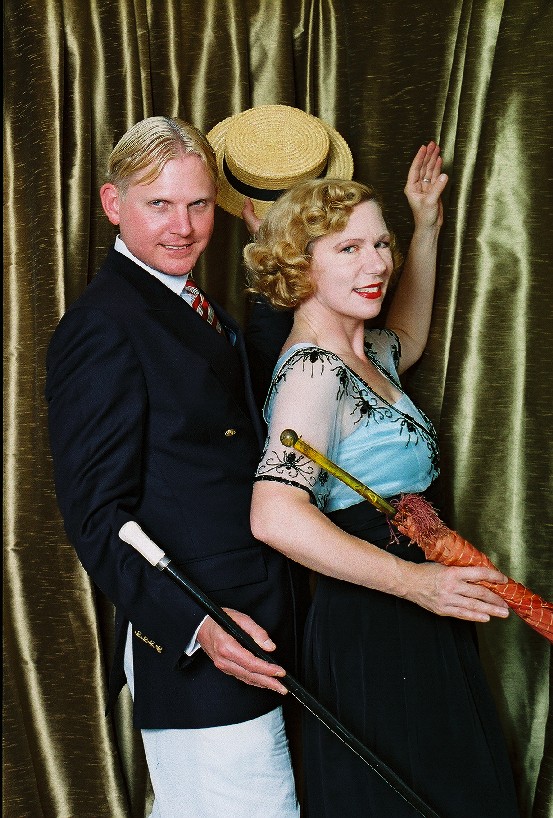
Singer Ann Gibson, who has
been crowned by her fans as “The Duchess of Ragtime,” has been gracing
Bay Area stages for over ten years with her velvety voiced renditions of
songs from the ragtime era through the 1930s. She has worked as vocalist
for the Black Tie Jazz Orchestra and the California Pops Orchestra. She
has also produced music reviews for the Art Deco Society of California
acclaimed for their originality of content and attention to authentic detail
in presenting popular music from the Art Deco Era. Miss Gibson was classically
trained as a child on piano, French horn, and also sang with several local
choirs. Her father, local band leader and composer Bob Soder, was instrumental
in her development as he exposed her to many different forms of music,
from classical to jazz.
Pianist Frederick Hodges is
well known to the ragtime world. He regularly performs solo piano and also
serves as pianist with the Don Neely’s Royal Society Jazz Orchestra. Frederick
is also a noted silent film accompanist and is regularly featured at silent
film festivals around the country and also serves as one of the house pianists
for the Niles Essanay Film Museum. Frederick is a favorite at jazz and
ragtime festivals around the country. More information can be found at
his website: www.frederickhodges.com

















